Day 3 in Devon, well actually it was Day 4 for me. The previous day was a Sunday which I spent relaxing with my dear friends near Okehampton and catching up with life and happenings in our lives over Sunday lunch at The Red Lion in Exbourne, top grub and ale. Thoroughly recommended and my thanks to them for a lovely treat.
My next walk was somewhere new for me. Lydford, which is on the western edge of Dartmoor.
I have actually been to the gorge here and the pub before (no surprise there then) but not the walk through the forest.
Once I had located the car park in the Forestry Commission land, I saddled up and with the aid of my OS map I wound my way along the track. Winding being the operative word and also descending. 'What goes down' I tentatively thought....!
Once the track opened into the clearings around the trees,a Song Thrush was first to be seen atop the firs giving it full throttle, and then a Tree Pipit too...
Not far from the car park the view opened up even more, looking across the valley with Brent Tor hazy and beguiling on the distant horizon...
As I sat on the bench here, a Hoverfly fed from the nectar on a plantain flower. They are great pollinators of flowers as well as Bees. Wasps are too. Although many people see them more as pests with a nasty sting. They are great predators also, feeding on aphids, so a real gardeners friend. Maybe give them a second thought next time you attempt to swat them away ?
The path kept on twisting and turning and descending. One such stretch had a tall bank to one side with a drop to the other, all covered in vegetation trees and shrubs with open canopy facing south. I spotted Butterflies dancing along the edges. They turned out to be Small Pearl Bordered Fritillaries.
A really odd place to find a colony I thought. The colony at Dunsford at the beginning of my Devon travels was the habitat where I would normally expect to find them. Bracken covered south facing slopes with their foodplant, Dog Violets. They are also found in woodland glades and clearings so I have read, so a path up a steep sided hill with open woodland wouldn't be too far off the mark, plus damp grassland flushes and moorland being another habitat. This area was smack bang in the middle. Such a lovely surprise bearing in mind my quarry for the day I had yet to discover.
Silver Y moths are a common sight at this time of year. They migrate across Europe and fly through the day often fluttering their wings at speed when perched. The Y very plain to see on the forewing.
I continued down past the Small Pearl Bordereds'
Always plenty of Speckled Woods' around too.
Good numbers of Foxgloves dotted the track edges
and occasional Green Veined Whites' stopped by for nectar.
As I got nearer the valley bottom so the moisture seemed to increase. It wasn't too dissimilar to a rainforest in the Amazon.The smell had a rich and thick pungent sweetness. Moss and Lichen hung over the trees like unwashed damp flannels. That's the closest analogy I could muster and a description I'm quite happy with.
The river gently trickled down through the valley. Bugle flowers were dotted everywhere along the rides. At one point I saw the head of a doll lying by the waters edge. A strange bizarre sight. Had this been washed down from a source further upstream or lost by a child here a long time ago as it looked quite old and worn?
I eventually reached the valley floor. As this is Forestry Commission land there are the occasional areas of tree clearance that give rise to flora and fauna not usually seen in a while.
As I turned a corner to a vast open clearing, I spied a bird from the corner of my eye. A Buzzard was sat on a dead tree stump..
Although I was hidden, perhaps it heard me and was off soon after..
The water pooled at the bottom of the hill before filtering into the main river.
There were many sightings of Speckled Yellow Moths all around here. Most declined the opportunity at a photograph but occasionally one would stop.
I was halfway through the clearing, yet more butterflies popped up before me. Another Small Pearl Bordered Fritillary. These, along with the Pearl Bordered can thrive in recently felled clearings such as this, the low growing plants excel after years of being subversed by the tree canopy.
The views looking back through the clearing were impressive. A few years previously it would have been just pine woodland with little life. The biodiversity today was inspiring.
I crossed the bridge indicated on my map so I was happy I was heading in the right direction and hopefully towards my destination
The path started uphill after the long trek down and more twists and turns followed.
I checked my grid reference with the one I had sourced for my quarry back at base, so I knew I was in the right place and not long after, my path reached another large clearing where previous tree felling had occured. The area was full of bracken on both sides with numbered poles dotted around. This must be a transect area for the extremely rare Heath Fritillary I was in search for surely?
I stood in the glade, silence pervaded as I held my breath....
The sun had held itself from full show almost all the way but now the stars aligned and it shone a light on me like a super trouper.
Sun... the vital ingredient for good views of butterflies and it dangled an invisible carrot to them as I waited, and then they began to silently glide around me, caught like tractor beams from some invisible starship.
I punched through the still air in ecstasy having found these little beauties!
They were on the brink of extinction in the 70's but due to concerted conservation efforts they have had a stay of execution. Although they only remain in Devon, Cornwall, Somerset and Kent in localised pockets. Some of these pockets can contain large numbers such as here. I counted at least 30 individuals. Like many Fritillaries, they pervade where clearings have been created due to tree felling. It's all to easy for colonies to become extinct however, once the tree canopy closes in again and no local habitat is available along with their foodplant.
I made camp here for lunch but was mindful not to intrude on their habitat as to be a detriment on their breeding success with my hobnail boots!
I could still muster top views even from the track and bracken edges from where I stood.
All the while, meadow grasshoppers flung themselves around my feet as I tried not to squash any.
Crawling across the track in front of me was this stunning Dor Beetle
Having satisfied myself with the sights before me I decided to head back up the track.
Another Tree Pipit serenaded me as I began my ascent.
Not only do you have to keep an eye on the sky but also the ground for fear of stepping on something such as this Moth caterpillar which I believe to be from a species called The Drinker.
Reaching the large open glade once more, another day flying Moth gave me the runaround, this is a Chimney Sweeper. I love the subtle white touches to the outer wing edge.
Back at the pool and just before the really steep climb I spied some more Lepidoptera, two different species together this time. A Small Copper which is one of my favourites and a Pearl Bordered Fritillary.
The Small Copper gave some fabulous contrasts against the background.
The Pearl Bordered used to be called the woodsman's friend. Back when forests used to be regularly coppiced for the making of charcoal, large areas of ground would be opened up where other plants would thrive, giving perfect habitat for the Fritillaries to breed until the trees grew back and they moved with the woodsmen as they coppiced elsewhere.
As this practice has all but died out, so has the habitat and subsequently the Butterfly. Conservation practices have been used to combat this by clearing areas but climate change and bramble encroachment have also had detrimental effects on their numbers.
Next to these two was an immaculate male Common Blue.
Another Moth, the Speckled Yellow showing well again
One deep breath as I prepared myself the long haul from the valley floor back past the amazon rainforest the Small Pearl Bordered Frits and finally back to the bench where I sat, caught my breath whilst drinking in the view to Brent Tor once more and some refreshing deserved green tea.
One last easy stretch to the van produced some rather good views of a normally reticent Garden Warbler. Heaven knows why it was given this name. Maybe it was common in gardens at one time but certainly not now, unless your garden is rural and has large areas of scrub.
This fairly rare LBJ or 'Little Brown Job' is best seen in the flesh as its call is virtually identical to that of the Blackcap. Only constant exposure to its warble do you gradually get to work out the difference. The Garden Warbler has a slightly slower, deeper and longer song to that of it's cousin but even then it can be so hard to differentiate. Normally a sighting, even brief is enough to be 100%
So I was lucky to be afforded a view as good as this.
No too far further along a rare sight of a Willow Warbler picking bugs from the ground. They are almost always seen in the trees. It also looks as though another Dor Beetle is just in shot too.
With lovely fresh pink clover at my feet and a Buzzard 'mewing' overhead I had made it back to the car park.
Just before I packed my camera away, a suitably titled Lacewing clung to the underside of the Oaks by the van. I do love these delicate insects.
A nice parting shot as I loaded up and headed back to base near Okehampton.
The lane where my friends live looked lush as I arrived back
I found them in the garden with the cats and dogs in the warm early evening. Rufus and Buffy looking very photogenic, like butter wouldn't melt, Hmmm!
Brian and Sara live in such a beautiful spot and at times like this it looks idyllic but the weather comes off Dartmoor and can change pretty quickly.
Back indoors Minnie greeted me on the stairs. This is a 'give me some food' greeting however and not a 'I really missed you' look
Upstairs, Spiky gave me the same hard stare treatment !
Although this had been a long and eventful day, it hadn't ended yet and was to get even more of the latter. Sara had organised a trip out in the evening. For ages she had been promising through a work colleague of hers to observe the Devon Beaver project that was ongoing nearby.
Now there are several projects in progress in Devon. One is a truly wild release on the River Otter, this and another is a controlled experiment vital for data gathering on the Beavers' impact on the ecology of the habitat and their ongoing release not just here but in Knapdale Forest in Scotland.
We met the retired couple who own the land that the Beavers are housed in. They gave us a detailed lecture on the rodent, showing us video footage, skull and pelt examples and what has been achieved so far.
The pelt has excellent waterproof and thermal properties and they have one million hairs per square inch! No wonder they were hunted to extinction for their fur in this country over 400 years ago.
Their teeth keep on growing as they knaw and chew through the timber, constantly renewing themselves.
They have two pairs in the enclosure that are kept apart. Last year one pair produced two young or 'Kits' They were doing well until a nearby farmer poured efluent into the water table and it poisoned the kits. They are hopeful the Beavers will breed again.
We loaded ourselves into the buggy and sped off down the Devon lanes, the sweet cool evening air filled our lungs along with a little diesel and the engine roar filled our ears. There was great anticipation on our side but our guide John warned us we may not manage a sighting as they can be very secretive holed up in their lodge.
Our destination reached, we could immediately see it was quite a large area and all manner of electronic measuring equipment along with cameras were in place.
This project is run by Exeter University and they can monitor everything from there.
Our first view was of a water flow monitoring system, measuring the flow of water into the compound.
John pointed out the Beavers' handywork as we entered the enclosure.
One thing was in our favour here. It had been a dry Spring so the water levels were low. A better chance to see one.
We had only ventured a few feet when we spotted movement in the ditch. We were very lucky, our first live Beaver!!
It sauntered and glided around the murky ditches as we tried to stay as silent as possible whilst negotiating all sorts of barriers of felled trees.
And there it sat for a while. I could just make out it's shape and eye through the trees.
It refused to move any more so John worked his way nearer to it to see if it would budge. It definitely did that. Much displeasure at being stalked, it did the classic Beaver tail slap and sped off into the myriad of jungle and ditch.
We moved further along and came to its lodge made from sticks , branches and mud with an underwater entrance.
When the female gives birth the male is sent packing to a secondary lodge whilst she cares for the kits.
The whole area is bordered with electric fencing at a cost to John of around 30 thousand pounds. He said he does receive a grant but he spends more of his own money than he receives. A real labour of love.
The BBC has filmed here for Countryfile and The One Show but he said he gets no monetary return from them.
He went on to explain the benefits of the project. The huge upturn in biodiversity on the site. Massive number of species that are created from the Beavers' work from coppicing and regrowth of trees, the birds that inhabit the trees, the insects and wildflowers that occur from this change too. It's a massive knock on effect down the chain and cannot be underestimated. Rare species that have thrived since this small reintroduction is unprecedented but detractors will always try to denigrate the benifits, usually through both fear and ignorance.
Burnet Moths were plentiful around the surrounding grassland
The whole area looked a bit of a mess but then Nature doesn't do tidy and the benefits far outweigh the negatives.
At the opposite end of the enclosure the flow meter recorded the water leaving and it has proved to slow the flow of water downstream thus reducing the risk of flooding in habitable areas. After all the problems with flooding in recent years , especially in this area, surely this can only be a good thing. It's a win win situation for all, just a bit of land relinquished for the Beavers, surely a small price to pay?
Wildflowers thrive here including Marsh Orchid
Tree Pipits sang around me, rare Willow Tits have been recorded here as well as Firecrest too.
The composting toilet on the way out I didn't use and apparently it isn't cheap to install but it's an indicator of the project's positive ecological footprint and hopefully this superb experiment will give invaluable information for the further reintroduction of such an iconic mammal that benefits all of us.
We drove home thoroughly fulfilled with what we had witnessed and although effectively it was a controlled enviroment, a bit like a Zoo, we had learned so much in a couple of hours and been one of a lucky few to view what I hope will be a new start to a creature that deserves a place back in this amazing land.
The title of this post is a lyric taken from the song 'Super Trouper' by ABBA
My next walk was somewhere new for me. Lydford, which is on the western edge of Dartmoor.
I have actually been to the gorge here and the pub before (no surprise there then) but not the walk through the forest.
Once I had located the car park in the Forestry Commission land, I saddled up and with the aid of my OS map I wound my way along the track. Winding being the operative word and also descending. 'What goes down' I tentatively thought....!
Once the track opened into the clearings around the trees,a Song Thrush was first to be seen atop the firs giving it full throttle, and then a Tree Pipit too...
Not far from the car park the view opened up even more, looking across the valley with Brent Tor hazy and beguiling on the distant horizon...
As I sat on the bench here, a Hoverfly fed from the nectar on a plantain flower. They are great pollinators of flowers as well as Bees. Wasps are too. Although many people see them more as pests with a nasty sting. They are great predators also, feeding on aphids, so a real gardeners friend. Maybe give them a second thought next time you attempt to swat them away ?
The path kept on twisting and turning and descending. One such stretch had a tall bank to one side with a drop to the other, all covered in vegetation trees and shrubs with open canopy facing south. I spotted Butterflies dancing along the edges. They turned out to be Small Pearl Bordered Fritillaries.
A really odd place to find a colony I thought. The colony at Dunsford at the beginning of my Devon travels was the habitat where I would normally expect to find them. Bracken covered south facing slopes with their foodplant, Dog Violets. They are also found in woodland glades and clearings so I have read, so a path up a steep sided hill with open woodland wouldn't be too far off the mark, plus damp grassland flushes and moorland being another habitat. This area was smack bang in the middle. Such a lovely surprise bearing in mind my quarry for the day I had yet to discover.
Silver Y moths are a common sight at this time of year. They migrate across Europe and fly through the day often fluttering their wings at speed when perched. The Y very plain to see on the forewing.
I continued down past the Small Pearl Bordereds'
Always plenty of Speckled Woods' around too.
Good numbers of Foxgloves dotted the track edges
and occasional Green Veined Whites' stopped by for nectar.
As I got nearer the valley bottom so the moisture seemed to increase. It wasn't too dissimilar to a rainforest in the Amazon.The smell had a rich and thick pungent sweetness. Moss and Lichen hung over the trees like unwashed damp flannels. That's the closest analogy I could muster and a description I'm quite happy with.
The river gently trickled down through the valley. Bugle flowers were dotted everywhere along the rides. At one point I saw the head of a doll lying by the waters edge. A strange bizarre sight. Had this been washed down from a source further upstream or lost by a child here a long time ago as it looked quite old and worn?
I eventually reached the valley floor. As this is Forestry Commission land there are the occasional areas of tree clearance that give rise to flora and fauna not usually seen in a while.
As I turned a corner to a vast open clearing, I spied a bird from the corner of my eye. A Buzzard was sat on a dead tree stump..
Although I was hidden, perhaps it heard me and was off soon after..
There were many sightings of Speckled Yellow Moths all around here. Most declined the opportunity at a photograph but occasionally one would stop.
I was halfway through the clearing, yet more butterflies popped up before me. Another Small Pearl Bordered Fritillary. These, along with the Pearl Bordered can thrive in recently felled clearings such as this, the low growing plants excel after years of being subversed by the tree canopy.
The views looking back through the clearing were impressive. A few years previously it would have been just pine woodland with little life. The biodiversity today was inspiring.
I crossed the bridge indicated on my map so I was happy I was heading in the right direction and hopefully towards my destination
The path started uphill after the long trek down and more twists and turns followed.
I checked my grid reference with the one I had sourced for my quarry back at base, so I knew I was in the right place and not long after, my path reached another large clearing where previous tree felling had occured. The area was full of bracken on both sides with numbered poles dotted around. This must be a transect area for the extremely rare Heath Fritillary I was in search for surely?
I stood in the glade, silence pervaded as I held my breath....
The sun had held itself from full show almost all the way but now the stars aligned and it shone a light on me like a super trouper.
Sun... the vital ingredient for good views of butterflies and it dangled an invisible carrot to them as I waited, and then they began to silently glide around me, caught like tractor beams from some invisible starship.
I punched through the still air in ecstasy having found these little beauties!
They were on the brink of extinction in the 70's but due to concerted conservation efforts they have had a stay of execution. Although they only remain in Devon, Cornwall, Somerset and Kent in localised pockets. Some of these pockets can contain large numbers such as here. I counted at least 30 individuals. Like many Fritillaries, they pervade where clearings have been created due to tree felling. It's all to easy for colonies to become extinct however, once the tree canopy closes in again and no local habitat is available along with their foodplant.
I made camp here for lunch but was mindful not to intrude on their habitat as to be a detriment on their breeding success with my hobnail boots!
I could still muster top views even from the track and bracken edges from where I stood.
All the while, meadow grasshoppers flung themselves around my feet as I tried not to squash any.
Crawling across the track in front of me was this stunning Dor Beetle
Having satisfied myself with the sights before me I decided to head back up the track.
Another Tree Pipit serenaded me as I began my ascent.
Not only do you have to keep an eye on the sky but also the ground for fear of stepping on something such as this Moth caterpillar which I believe to be from a species called The Drinker.
Reaching the large open glade once more, another day flying Moth gave me the runaround, this is a Chimney Sweeper. I love the subtle white touches to the outer wing edge.
Back at the pool and just before the really steep climb I spied some more Lepidoptera, two different species together this time. A Small Copper which is one of my favourites and a Pearl Bordered Fritillary.
The Small Copper gave some fabulous contrasts against the background.
The Pearl Bordered used to be called the woodsman's friend. Back when forests used to be regularly coppiced for the making of charcoal, large areas of ground would be opened up where other plants would thrive, giving perfect habitat for the Fritillaries to breed until the trees grew back and they moved with the woodsmen as they coppiced elsewhere.
As this practice has all but died out, so has the habitat and subsequently the Butterfly. Conservation practices have been used to combat this by clearing areas but climate change and bramble encroachment have also had detrimental effects on their numbers.
Next to these two was an immaculate male Common Blue.
Another Moth, the Speckled Yellow showing well again
One deep breath as I prepared myself the long haul from the valley floor back past the amazon rainforest the Small Pearl Bordered Frits and finally back to the bench where I sat, caught my breath whilst drinking in the view to Brent Tor once more and some refreshing deserved green tea.
One last easy stretch to the van produced some rather good views of a normally reticent Garden Warbler. Heaven knows why it was given this name. Maybe it was common in gardens at one time but certainly not now, unless your garden is rural and has large areas of scrub.
This fairly rare LBJ or 'Little Brown Job' is best seen in the flesh as its call is virtually identical to that of the Blackcap. Only constant exposure to its warble do you gradually get to work out the difference. The Garden Warbler has a slightly slower, deeper and longer song to that of it's cousin but even then it can be so hard to differentiate. Normally a sighting, even brief is enough to be 100%
So I was lucky to be afforded a view as good as this.
No too far further along a rare sight of a Willow Warbler picking bugs from the ground. They are almost always seen in the trees. It also looks as though another Dor Beetle is just in shot too.
With lovely fresh pink clover at my feet and a Buzzard 'mewing' overhead I had made it back to the car park.
Just before I packed my camera away, a suitably titled Lacewing clung to the underside of the Oaks by the van. I do love these delicate insects.
A nice parting shot as I loaded up and headed back to base near Okehampton.
The lane where my friends live looked lush as I arrived back
I found them in the garden with the cats and dogs in the warm early evening. Rufus and Buffy looking very photogenic, like butter wouldn't melt, Hmmm!
Brian and Sara live in such a beautiful spot and at times like this it looks idyllic but the weather comes off Dartmoor and can change pretty quickly.
Back indoors Minnie greeted me on the stairs. This is a 'give me some food' greeting however and not a 'I really missed you' look
Upstairs, Spiky gave me the same hard stare treatment !
Although this had been a long and eventful day, it hadn't ended yet and was to get even more of the latter. Sara had organised a trip out in the evening. For ages she had been promising through a work colleague of hers to observe the Devon Beaver project that was ongoing nearby.
Now there are several projects in progress in Devon. One is a truly wild release on the River Otter, this and another is a controlled experiment vital for data gathering on the Beavers' impact on the ecology of the habitat and their ongoing release not just here but in Knapdale Forest in Scotland.
We met the retired couple who own the land that the Beavers are housed in. They gave us a detailed lecture on the rodent, showing us video footage, skull and pelt examples and what has been achieved so far.
The pelt has excellent waterproof and thermal properties and they have one million hairs per square inch! No wonder they were hunted to extinction for their fur in this country over 400 years ago.
Their teeth keep on growing as they knaw and chew through the timber, constantly renewing themselves.
They have two pairs in the enclosure that are kept apart. Last year one pair produced two young or 'Kits' They were doing well until a nearby farmer poured efluent into the water table and it poisoned the kits. They are hopeful the Beavers will breed again.
We loaded ourselves into the buggy and sped off down the Devon lanes, the sweet cool evening air filled our lungs along with a little diesel and the engine roar filled our ears. There was great anticipation on our side but our guide John warned us we may not manage a sighting as they can be very secretive holed up in their lodge.
Our destination reached, we could immediately see it was quite a large area and all manner of electronic measuring equipment along with cameras were in place.
This project is run by Exeter University and they can monitor everything from there.
Our first view was of a water flow monitoring system, measuring the flow of water into the compound.
John pointed out the Beavers' handywork as we entered the enclosure.
One thing was in our favour here. It had been a dry Spring so the water levels were low. A better chance to see one.
We had only ventured a few feet when we spotted movement in the ditch. We were very lucky, our first live Beaver!!
It sauntered and glided around the murky ditches as we tried to stay as silent as possible whilst negotiating all sorts of barriers of felled trees.
And there it sat for a while. I could just make out it's shape and eye through the trees.
It refused to move any more so John worked his way nearer to it to see if it would budge. It definitely did that. Much displeasure at being stalked, it did the classic Beaver tail slap and sped off into the myriad of jungle and ditch.
We moved further along and came to its lodge made from sticks , branches and mud with an underwater entrance.
When the female gives birth the male is sent packing to a secondary lodge whilst she cares for the kits.
The whole area is bordered with electric fencing at a cost to John of around 30 thousand pounds. He said he does receive a grant but he spends more of his own money than he receives. A real labour of love.
The BBC has filmed here for Countryfile and The One Show but he said he gets no monetary return from them.
He went on to explain the benefits of the project. The huge upturn in biodiversity on the site. Massive number of species that are created from the Beavers' work from coppicing and regrowth of trees, the birds that inhabit the trees, the insects and wildflowers that occur from this change too. It's a massive knock on effect down the chain and cannot be underestimated. Rare species that have thrived since this small reintroduction is unprecedented but detractors will always try to denigrate the benifits, usually through both fear and ignorance.
Burnet Moths were plentiful around the surrounding grassland
The whole area looked a bit of a mess but then Nature doesn't do tidy and the benefits far outweigh the negatives.
At the opposite end of the enclosure the flow meter recorded the water leaving and it has proved to slow the flow of water downstream thus reducing the risk of flooding in habitable areas. After all the problems with flooding in recent years , especially in this area, surely this can only be a good thing. It's a win win situation for all, just a bit of land relinquished for the Beavers, surely a small price to pay?
Wildflowers thrive here including Marsh Orchid
Tree Pipits sang around me, rare Willow Tits have been recorded here as well as Firecrest too.
We drove home thoroughly fulfilled with what we had witnessed and although effectively it was a controlled enviroment, a bit like a Zoo, we had learned so much in a couple of hours and been one of a lucky few to view what I hope will be a new start to a creature that deserves a place back in this amazing land.
The title of this post is a lyric taken from the song 'Super Trouper' by ABBA











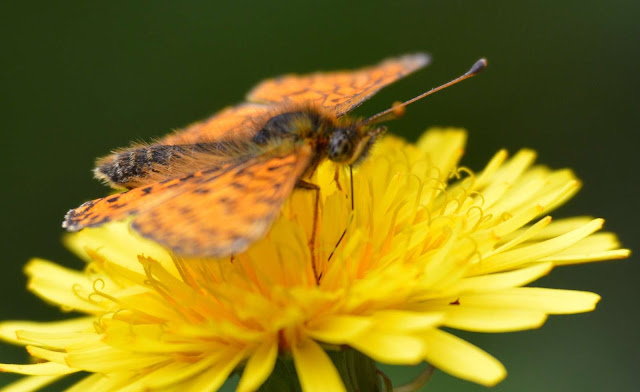

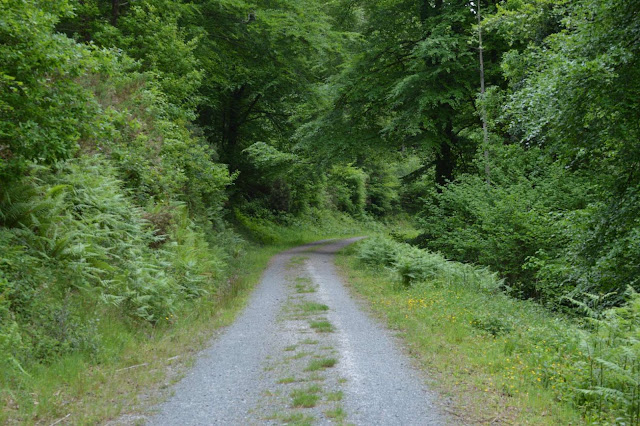














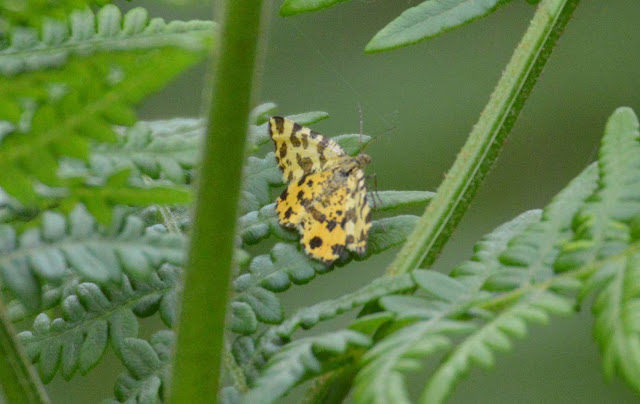

















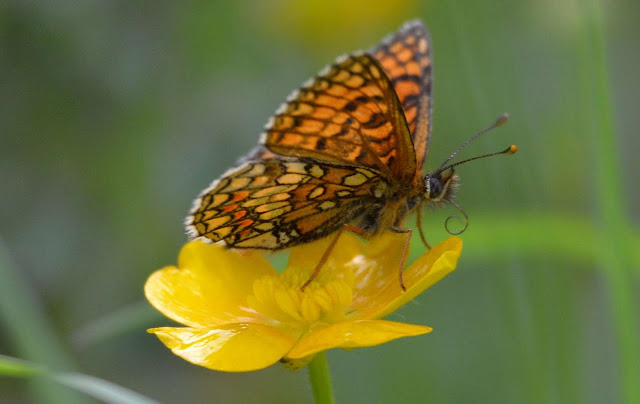





































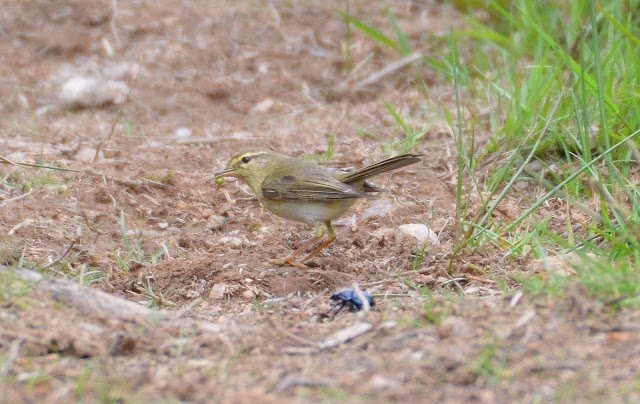

















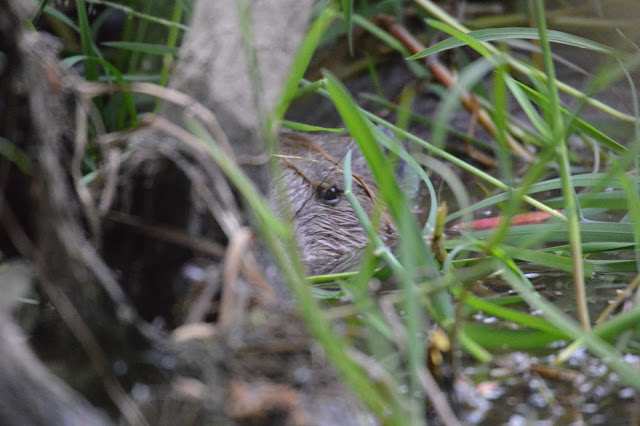

















No comments:
Post a Comment
Please leave me a message if you would like to do so.